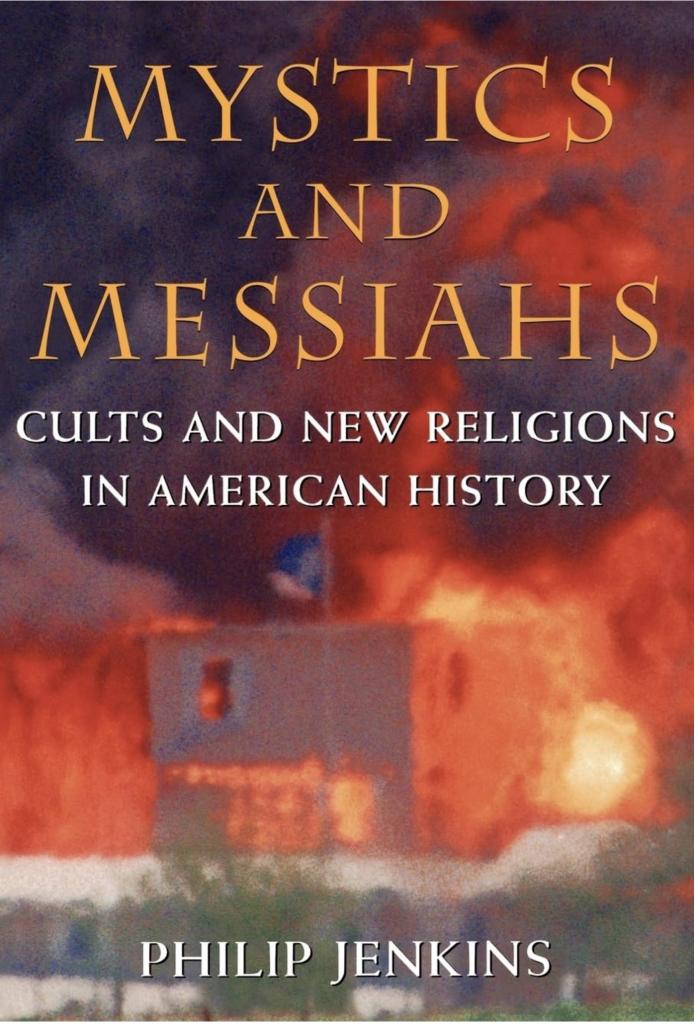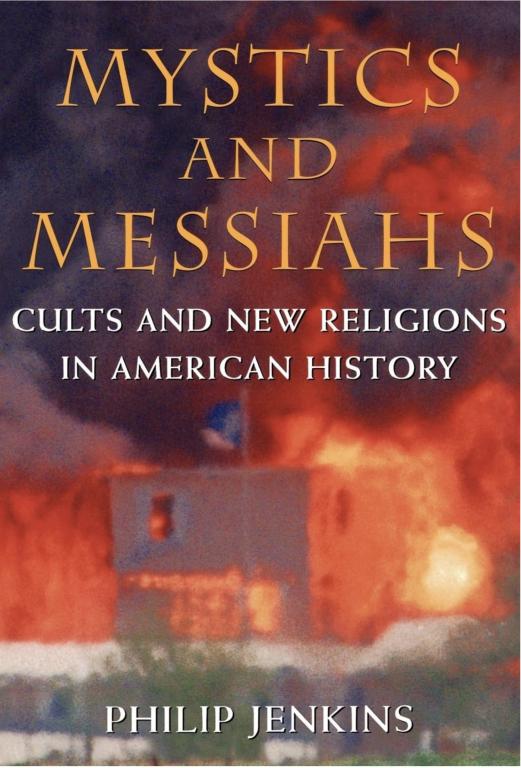Recently, I described the fairly extensive research I did early in my career on social issues, or various so-called panics and nightmares, which led me to become deeply involved with themes of drugs, child abuse, serial killing, terrorism, and other sensational issues, the area for which I was known before turning my attention to world Christianity and Christian history.
At this point, you might be thinking: “What happened to religion in all of this?” Most of my subsequent career has been focused on religious themes. So was it all something new after I was done writing about social issues? No, it wasn’t. If you look at the titles I listed, the theme of religion is inextricably linked to them. If you’re interested in the history of religion in modern America since the 1970s, you can learn a lot from this approach to social issues. In other words, if you ignore those themes (and many still do), I think you’re missing the heart of the story.
Some of the religious connections are obvious; studies of cults and emerging religions certainly are; but then and since, you couldn’t study terrorism without paying due attention to the relationship between religion and violence; and that was a big component of my teaching and research at the time. I’ll illustrate this point with two other themes that have had a profound impact on how I study very mainstream topics in American religion. One concerns the role of the fear of Satanism in shaping how I study the history of Evangelicals and Pentecostals, and next time I’ll consider the importance of the issue of sexual abuse in the history of American Catholicism.

Evangelicals, Pentecostals, and Satan
In the second half of the 20th century, the debate over child sexual abuse had a rather large and surprising religious dimension. As I noted in a recent blog post, much of the rhetoric at the time was about ritual child abuse, devil worship, and memory recovery, and much of it was strongly connected to Evangelical and Pentecostal activism. That connection could only be understood in the context of the ongoing revival movements at the time, with their emphasis on the end times and their belief in demons and evil spirit forces. These devil worship scares also provided a great vehicle for religious activists to get their message across to the mainstream media. Remember, this was the era of the Moral Majority, and was soon followed by the Christian Right.
Any account of modern American cultural history (political, social, cultural, religious) must pay careful attention to the widespread and influential fear of Satanism, which is inescapable for anyone who has been exposed to the mass media. This fear was already evident in the late 1970s and reached a peak of hysteria in the decade after 1985. It then merged with the then ongoing ridiculous panic that claimed that a large number of children were being kidnapped and murdered, supposedly by a Satanic cult. Incidentally, the excellent first season of True Detective recently did a brilliant job of recreating the paranoia of that era, especially with its focus on the threat to children (I actually talked about this show when it first aired in 2014).
In many ways, this was a full-scale revival of the classic witch-hunt panic of the previous century. Ordinary ordinary people came to believe in the secret existence of a huge cult dedicated to devil worship, a group that held secret meetings with orgies and possibly human sacrifices. The panic led to a series of horrific sensational cases, with large-scale trials and the punishment of totally innocent people, some of whom languished in prison for years. On a much less damaging level, the Church led a nationwide campaign against the celebration of Halloween.
Later evangelicals and Pentecostals have largely forgotten this connection, but their campaign was a central and fundamental element of the whole Satanism scare. Walk into any evangelical bookstore back then (and they were very common) and you’ll find wall-to-wall books on ritual abuse, satanic worship, the threat of cults, the evils of Halloween, satanic rock and roll, satanic serial killers, ritual murder, and so on…
These shelves contained a number of so-called “memoirs” written by various con artists, charlatans, and simply delusional people. They claimed to have documented their experiences in Satanic cults, which were generally portrayed as huge, murderous, and extremely dangerous. Typically, these “debunkers” and survivors portrayed themselves as very important figures in those movements, making their subsequent conversions to evangelical faith seem even more impressive. Some memoirs were supposed to be the work of “breeders,” women who supposedly gave birth to children only to be sacrificed in cult rituals. One very visible example of this tradition was the so-called “Lauren Stratford,” who told a literally insane story about her career in the Satanic movement. After her lies were exposed, she disappeared for a while, only to later reappear as an alleged (and equally false) Holocaust survivor. A lovely woman. To understand the subculture of the time, it’s worth reading the substantial Wikipedia entry on her career.
This publishing effort went far beyond all the classes and trainings usually focused on “spiritual warfare” offered in evangelical churches and youth camps. These ideas were at the forefront of televangelist broadcasts. Police and child protection agencies regularly held training sessions, inviting self-proclaimed occult experts to explain the warning signs of demonic activity. Usually these experts had close ties to Pentecostal and evangelical churches.
While by no means the only element in the story, one of the influential currents in contemporary American religion is the New Apostolic Reformation, which is fully steeped in ideas of spiritual warfare, territorial spirits, exorcism, spiritual mapping, and many other themes that seem entirely justified by the widely circulated demonic narrative. The NAR churches were integral to the subsequent expansion and flowering of Christian nationalist politics. Intimately intertwined with that phenomenon, all the familiar demonic narratives were rolled up into the QAnon mythology, which I have posted about here in the past. Even if white evangelicals are not the only consumers of QAnon and Pizzagate, they are among the true believers.
So my question is, what is the outcome of the November presidential election that would not lead to further growth and proliferation of these theories?
The horror of Satanism was a very important aspect of an entire era in American religious history, the effects of which continue to this day.


